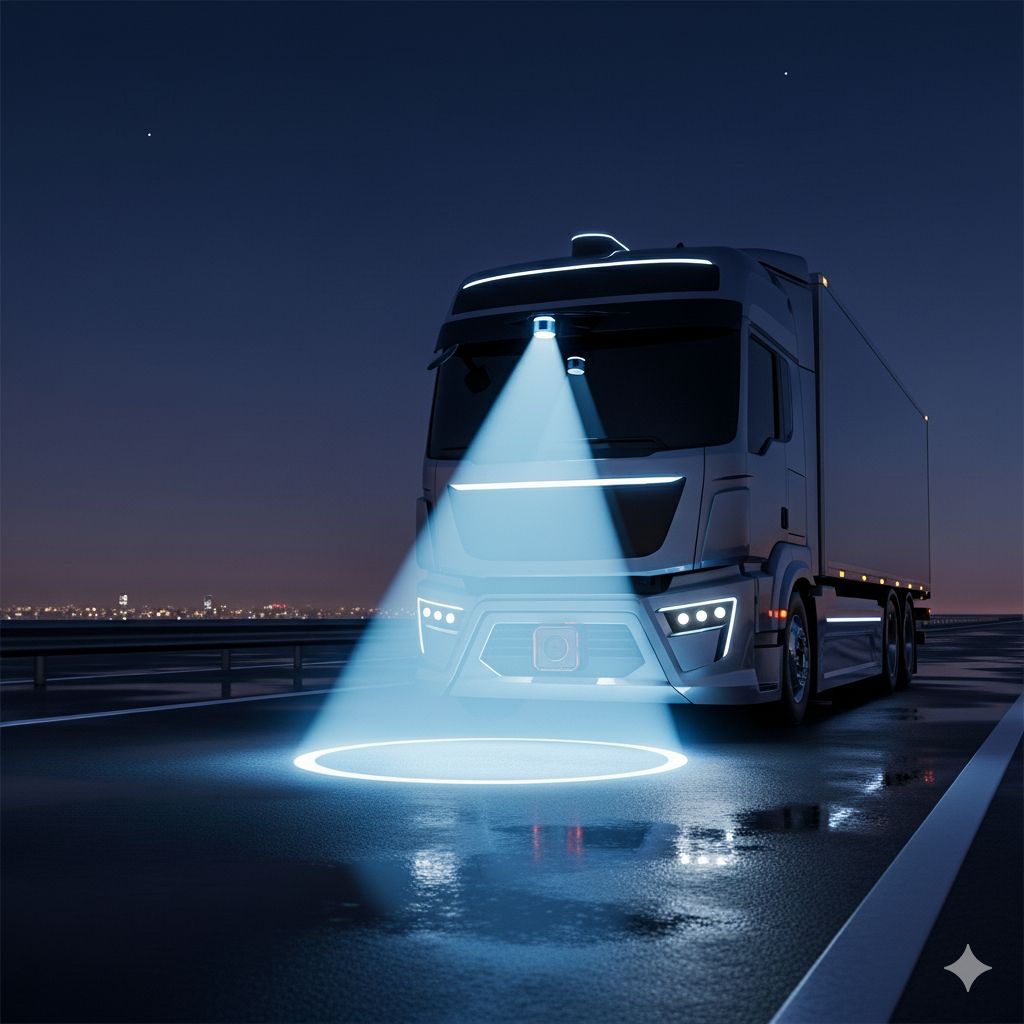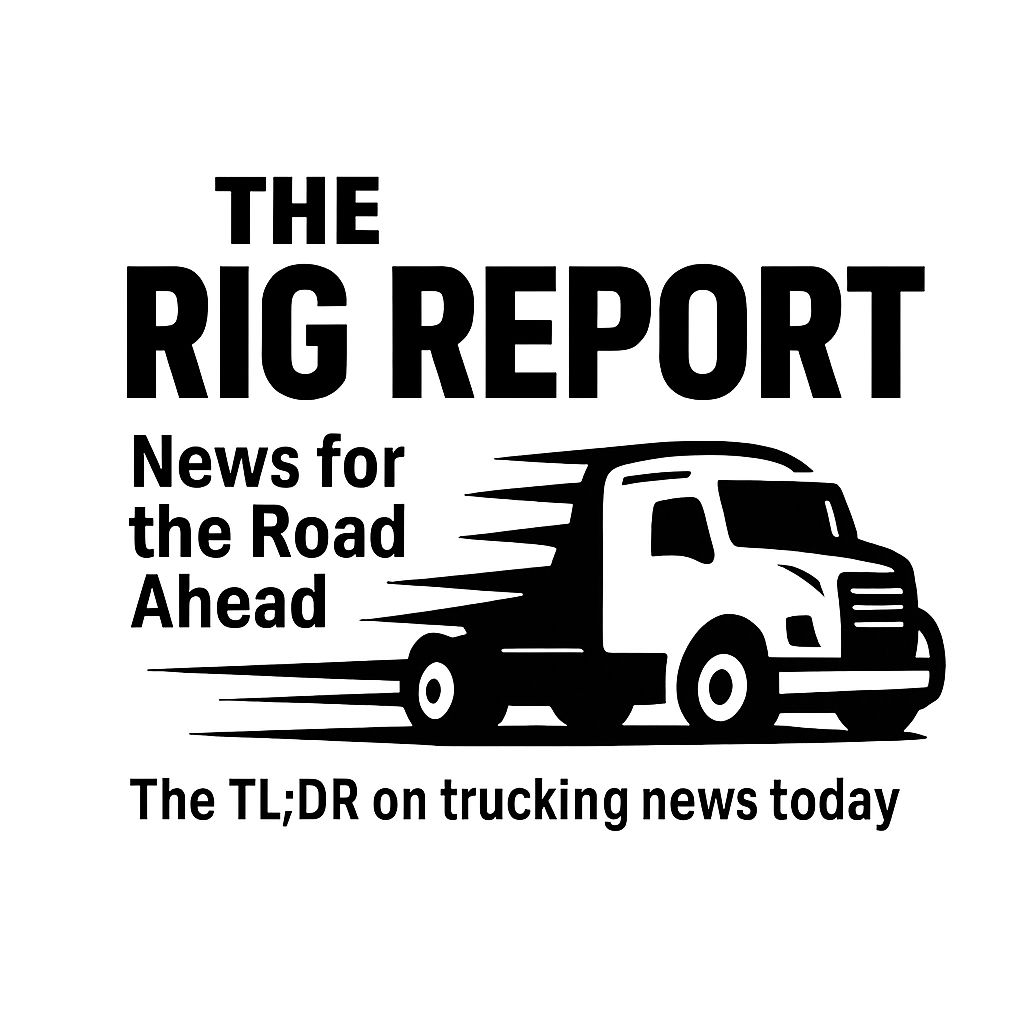
🚛 Autonomous Trucks vs. Drivers: What’s at Stake and What Can Be Done
Autonomous Trucks: The Threat, The Politics, And What Drivers Must Do
Autonomous (self-driving) trucking is moving fast — not just in labs or pilot projects, but increasingly in courts, in statehouses, and on federal legislative agendas. For many truck drivers, this raises a critical question: Will my job survive?
The worry isn’t far-fetched. Long-haul routes — “boring miles” on interstates where driving is mostly steady state — are among the first to be automated. If autonomous trucks operating without humans on board are allowed in interstate commerce, the implications for the driver shortage, labor rights, and safety rules are huge.
This article walks through what’s happening now (laws, bills, state moves), what’s at risk for drivers, and what drivers and their allies should be doing today to shape the outcome — instead of reacting to it after it’s too late.
What’s Already in Motion (Regulation, Legislation, State Policy)
Here are some of the concrete legal and regulatory developments in 2025 that are pushing toward autonomous trucking deployment:
Bill / Regulation | What It Would / Does | Status / Key Details |
|---|---|---|
AMERICA DRIVES Act (Rep. Vince Fong, R-CA) | Establish a federal framework for autonomous commercial motor vehicles (ACMVs). Would allow Level 4 or 5 automated driving systems (ADS) in trucks to operate across state lines without a human driver or remote operator. Seeks to preempt conflicting state laws. Would also direct FMCSA to revise rules by 2027. Congressman Vince Fong+3www.assp.org+3Commercial Carrier Journal+3 | Introduced July 2025. Under debate. Labor and safety groups have already raised objections. Saferoads+2FreightWaves+2 |
Autonomous Vehicle Acceleration Act, S.1798 (Sen. Cynthia Lummis, WY) | General name suggests speeding up autonomous vehicle deployment. Text still being reviewed. Congress.gov | |
State Laws & Testing Permissions | Many states have moved to allow testing or limited deployment of autonomous commercial trucks, some with human “safety operators” required, others more permissive. E.g., Alabama allows commercial autonomous vehicles without requiring a human operator in-vehicle, under certain liability/insurance requirements. Tech.co | As of now, 35 states allow some form of autonomous truck testing or deployment. But there is no uniform rule — laws vary wildly by state. Frost Brown Todd+2Tech.co+2 |
California’s Regulatory Moves | California had banned autonomous commercial semi-trucks over 10,001 lbs; but as of mid-2025, regulators are proposing rules to allow testing of such trucks with certain requirements. The state also proposed enhanced data reporting and enforcement powers. AP News | The proposed regulations in CA are subject to public comment; opposing voices include labor unions worried about job losses. AP News |
State Bills That Die / Face Resistance | For example, in Delaware a bill passed the Senate to ban autonomous trucks over 26,000 lbs without a human present, but it died before full legislative approval. California had similar bills requiring human drivers in autonomous trucks, which were vetoed. Land Line Media+1 |
What’s at Stake for Drivers
Here are risks and impacts for drivers if autonomous trucks deploy widely and unregulated:
Job displacement: Interstates, long-haul, night runs — the kinds of driving that are easier to automate — are most vulnerable. Drivers for those routes may be replaced, partially or wholly.
Wage pressure: Even before full automation, rates could be pushed down by competition from fleets using semi-autonomous or autonomous equipment, reducing human-driver costs.
Change in working conditions: If autonomous trucks still require driver-supervisors, remote monitoring, or intermittent driving requirements, drivers may face new forms of surveillance, different shift patterns, or avoidable risks.
Safety and liability: Accidents involving autonomous trucks raise questions of who’s responsible — the manufacturer, the carrier, the software provider. Current laws are often unclear. Safety issues like sensor failures, edge cases (icy roads, heavy traffic) are still serious.
Regulation lag: Technology may outpace regulation. Once a federal law like AMERICA DRIVES passes, the ability of states to impose stricter safety or labor protections may be limited or preempted. This could mean widespread deployment before adequate safety/labor safeguards are in place.
What Drivers Should Be Doing Now
Drivers, owner-operators, small fleets, and their organizations have a narrow window to affect how autonomous trucking is regulated. Here are actionable strategies, grouped by approach:
1. Organizing & Alliances
Unionizing or joining/strengthening existing driver associations
Traditional unions (e.g. Teamsters) can negotiate protections: ensuring that any deployment of autonomous trucks includes human oversight, or that drivers are transitioned into new roles (e.g. remote operations, safety supervisors).Alliances with other labor sectors
Warehouse workers, port operators, logistics center employees will also be affected. Joint political/lobbying groups might be more powerful.Partnerships with public safety & consumer safety organizations
Emphasize safety in public messaging: road fatality prevention, protecting communities. Partnering with local safety advocates, highway patrol, etc., can influence public opinion and regulation.
2. Legislative & Regulatory Engagement
Track & influence federal bills
AMERICA DRIVES Act is a key one. Drivers and associations should provide public comments, meet with lawmakers, testify at hearings.Push for human-in-the-loop laws
Legislation that requires a human driver or safety operator on board for any ADS truck, at least until technology proves safety in all conditions.Liability and insurance standards
Laws should make manufacturers fully liable for design, software, and system failures; require high insurance minimums; clear rules for what happens in crashes.Labor protections
Legislation to protect wages, guarantee retraining for displaced drivers, benefits for mixed driver/autonomous roles.State regulation as backup
If federal regulation moves fast, states could try to preserve protections via state laws (human safety operator requirement, data reporting, restricting driverless operation in certain weight classes or road types).
3. Public Awareness & Narrative Control
Media & storytelling
Put a human face on the risk. Share stories of drivers who depend on long-haul income, families, etc. Show that automation isn't just about cost savings—it has ethical/community implications.Data transparency
Demand transparency in safety data from companies testing autonomous trucks—mishaps, near misses, test protocols, mapping requirements, etc.Consumer/shipper opinion
Mobilize shippers and consumers by emphasizing safety, reliability, and local jobs. If shippers push back or demand that carriers use human-supervised systems, that can shift market incentives.
4. Skill Diversification & Future-Proofing
Upskilling into roles that automation isn’t likely to replace soon** — e.g. local/regional driving in complex environments, maintenance of autonomous systems, dispatch, operations management.
Certifications in safety/digital systems so that drivers can serve as safety operators or supervisors in autonomous systems.
Monitoring pilot programs — analyzing what works, safety metrics, how companies are operating ADS trucks. That knowledge can inform legislative testimony and bargaining.
Specific Bills & Actions to Watch
Here are the bills, state rules, and regulatory deadlines that are most critical for drivers to monitor or get involved in:
Name / Jurisdiction | Key Provisions | What Drivers Should Do Now |
|---|---|---|
AMERICA DRIVES Act (House, Rep. Vince Fong) | Allows Level 4 / 5 driverless interstate operation, preemption of restrictive state laws. Exempts some human-centric requirements (hours of service, drug testing). www.assp.org+2Commercial Carrier Journal+2 | Contact your representatives. Lobby for amendments: keep hours-of-service, drug testing, require driver on board or remote operator. Push for inclusion of labor protections. |
Autonomous Vehicle Acceleration Act, S.1798 | Accelerates deployment of self-driving vehicles (various types) including large trucks. Congress.gov | Track its movement. Push for amendment or companion bills that protect drivers. |
California’s Proposed Heavy-Duty Truck Testing Rules | Propose allowing testing of trucks over 10,001 lbs on public roads under new rules, ending (or modifying) prior bans. Data reporting requirements, enforcement powers for DMV. AP News | Submit public comments. Work with state driver organizations to influence rulemaking. Highlight safety and job concerns. Attend DMV/regulatory meetings. |
State-by-State Autonomous Vehicle Statutes | Some states permit autonomous trucks; some require human drivers; others limit permitted weight or operating zones. Baker Donelson+2Tech.co+2 | Know your state’s law. If you live in a state with permissive law, push for safeguards. If in restrictive ones, support keeping protections. Mobilize local legislators. |
What Regulatory & Political Hurdles Drivers Can Use
Federal preemption limits: If federal law gives too much power to ADS companies, states lose ability to regulate for safety or labor. Drivers should argue that federal preemption should be limited or include opt-ins for stricter state regulation.
Safety testing & certification standards: Autonomous systems must pass realistic testing (weather, road conditions, mixed traffic) before being allowed driverless. Drivers should demand public safety standards equivalent to or higher than existing standards for human drivers.
Insurance & liability: Legislation needs to clearly define who pays when autonomous trucks crash — manufacturer? software provider? carrier? States can require high insurance minimums.
Transparency & oversight: Rules that require companies to report every incident, software bugs, operational metrics (how often autonomy disengaged, near misses, etc.). Driver input matters here; such data gives ammunition.
Economic protection programs: Displaced drivers may need retraining, job placement, safety nets. Drivers or organizations should push for legislation that funds transition programs.
Possible Alliance or Union Models
A few models can help drivers remain organized and influential:
Existing unions expanding focus: Teamsters is already involved. Drivers should push unions to adopt formal positions on autonomous trucking, negotiate terms in contracts that protect jobs (e.g. ensure any autonomous deployment includes driver roles).
New alliances / drivers-only associations: Especially for owner-operators who might distrust big unions or larger bureaucracies. A national drivers alliance could offer lobbying, legal support, public relations.
Coalitions with safety/consumer groups: Pair with highway safety nonprofits, parents’ groups, rural community organizations. Safety resonates with media and legislators more than purely economic arguments.
Regional resistance or pilot control: Where possible, local governments or states could limit autonomous deployment (e.g. restrict weight, speed, require a human safety monitor) until clear safety case is made. Organized local or state-level driver groups are essential.
Counterarguments & Risks Drivers Should Be Ready To Respond To
To make a strong case, drivers need data and arguments responding to what the other side will say. Some commonly raised arguments by proponents of autonomous trucking, and how drivers can counter:
Proponent Claim | Driver Response Strategy |
|---|---|
“It will solve driver shortage and reduce costs, thus lowering consumer/shipping costs.” | Agree that the driver shortage is real — but argue that cost savings shouldn’t come by sacrificing jobs. Propose incremental adoption (with human oversight) rather than full replacement. Highlight job creation in safety, maintenance, supervision roles. |
“Autonomous trucks are safer / less prone to human error / less fatigue.” | Acknowledge that some errors come from human fatigue etc. But emphasize that autonomous systems still fail in bad weather, construction zones, mixed traffic — edge cases. Demand public safety data comparing autonomous vs. human-drivers over a wide set of conditions. |
“Regulation is slowing innovation and harming competitiveness.” | Innovation is good; but unregulated deployment can cause crashes, public backlash, legal liability. Argue that safety regulation now protects the public and ensures long-term viability. |
“It will make shipping cheaper, benefiting consumers and economy.” | True, but who benefits must be asked. Are savings shared with consumers? Or captured by shippers/owners with negative externalities (job losses, spillover costs in insurance or public safety)? Advocate fair policies. |
What a Good Outcome Looks Like
To protect drivers while allowing progress (if it must come), here are things drivers and their advocates should push for to be included in any law or regulation that passes:
Mandatory human safety operator (in cab or remote) for initial deployment of autonomous trucks.
Strict phased deployment with performance benchmarks: safety record, operational metrics, environmental conditions.
Strong liability laws: manufacturer, software, sensor failures accountable.
Maintain current hours-of-service, drug/alcohol testing, safety inspection standards for human drivers or safety operators.
Retraining funds, job transition programs for displaced drivers.
Transparent public reporting of incidents, disengagements, near misses.
State opt-outs or stricter state laws where local conditions demand them (weather, terrain, road infrastructure).
Conclusion
Autonomous trucks will likely reshape long-haul trucking. But for drivers, this doesn’t need to be a death sentence for jobs — not if action is taken now. The regulatory landscape is in flux: bills are being written, state rules are being changed, public comment periods are open, and momentum is building both for automation and for resistance.
Drivers who stay informed, organize, tell their stories, and push for laws that preserve safety, fairness, and some form of human oversight have a chance to guide how this future takes shape — rather than being victims of it.
🔍 Fuel Price
US average on-highway diesel: $3.739/gal for the week ending Sep 15, 2025. YCharts+2FRED+2
Regional variations (diesel):
West Coast ~ $4.52-$4.97/gal SMC³+2U.S. Energy Information Administration+2
Gulf Coast ~ $3.38-$3.39/gal SMC³+2U.S. Energy Information Administration+2

